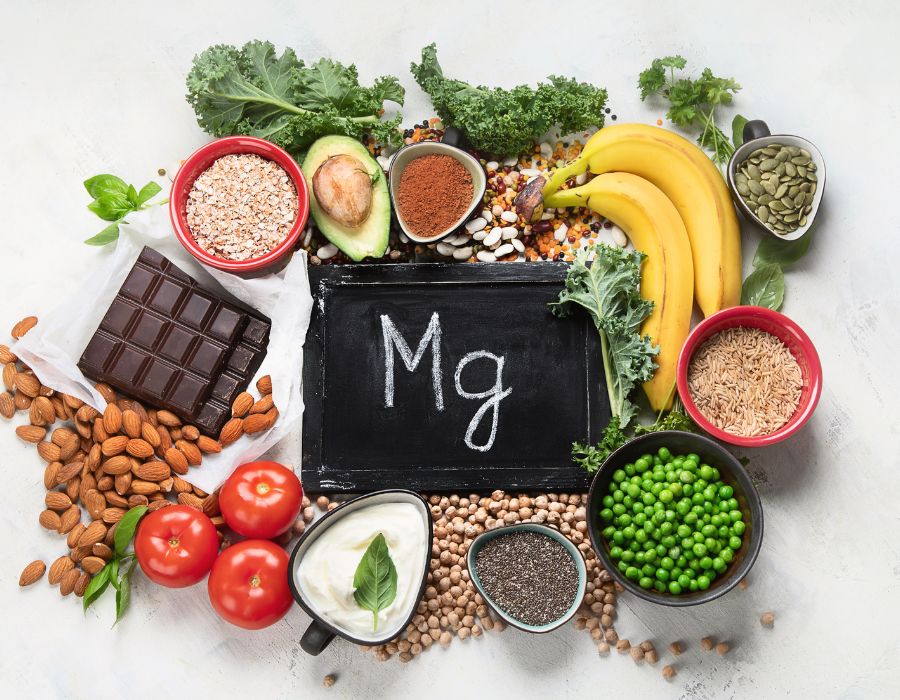I still remember the day my grandmother handed me her worn-out notebook filled with handwritten recipes and remedies. She had spent years gathering this information for my grandfather, who was managing diabetes. It wasn’t just a random collection of notes—these pages were the result of her love, care, and unwavering determination to help him live a healthier life. That single gesture inspired me to create a comprehensive, vegetarian-friendly guide for anyone seeking a reliable diet chart for diabetic patient.
I’m sharing this personal journey with you because I know how overwhelming it can feel to juggle meal planning, lifestyle changes, and blood sugar checks. In this blog, you’ll discover everything I’ve learned from my family’s experience—from the importance of diabetes meal plans to the best diabetes-friendly foods—so you can confidently take control of your health or support a loved one.
Why My Granny’s Research Matters

My granny was the embodiment of persistence. Each time my grandfather’s blood sugar levels fluctuated, she would flip through her notebook, test new recipes, and adjust ingredients based on his progress. Over the years, her consistent efforts proved invaluable.
- Holistic Approach: She combined traditional home remedies with modern diabetes nutrition guidelines.
- Vegetarian Focus: Since our family avoids eggs and meat, her recipes are entirely plant-based, using protein sources like lentils, legumes, and dairy alternatives.
- User-Friendly: She organized everything into simple charts and lists so my grandfather could easily follow along.
Witnessing her dedication taught me that managing diabetes doesn’t have to be about deprivation—it can be a journey filled with discovery, tasty meals, and newfound energy.
Understanding Diabetes and Meal Planning
Before diving into the actual diabetic diet plan, it’s crucial to understand how diabetes affects your body and why a carefully structured meal plan makes all the difference.
The Basics of Diabetes
- Blood Sugar Levels: When you have diabetes, your body struggles to regulate glucose effectively. This can lead to spikes or drops in blood sugar, affecting your energy and overall health.
- Insulin Management: Insulin is the hormone that helps move sugar from your blood into your cells. In Type 2 diabetes, either your body doesn’t produce enough insulin, or it can’t use insulin properly.
- Type 2 Diabetes Diet: This typically emphasizes foods with a lower impact on blood sugar, focusing on high-fiber, nutrient-dense options.
My grandfather’s doctor explained that by adjusting our cooking habits and portion sizes, we could help stabilize his blood sugar. We quickly realized that diet is more than just calories; it’s a form of medicine.
Why Meal Planning is Essential
- Balanced Nutrition: A diabetes meal plan ensures you’re getting the right mix of carbohydrates, proteins, and healthy fats.
- Glycemic Index Awareness: Knowing which foods have a high or low glycemic index can help prevent sudden spikes in blood sugar.
- Carbohydrate Counting: Learning how many carbs are in your meals helps you make informed choices, especially if you’re taking medication or insulin.
- Prevent Overeating: Planned meals reduce impulsive snacking, which can derail your efforts to maintain stable blood sugar levels.
In my family, once we started mapping out our weekly meals, it felt like a weight had been lifted. There was no more guesswork. My grandfather knew exactly what to eat and when, which made his daily routine much smoother.
10 Ways to Build the Perfect Diet Chart for Diabetic Patient
Below, I’ve distilled the most impactful lessons I learned from my granny’s notebook. Each tip is a stepping stone to help you craft a sustainable, effective diabetic diet plan that fits seamlessly into your life.
1. Prioritize Complex Carbohydrates
Not all carbs are created equal. Complex carbohydrates digest more slowly, providing a steady release of energy without causing drastic blood sugar spikes.
- Examples: Whole wheat chapatis, brown rice, quinoa, millet, oats.
- Practical Tip: Replace white rice with brown rice or quinoa. These grains keep you fuller longer and support consistent blood sugar levels.
2. Embrace Plant-Based Proteins
A vegetarian or mostly plant-based approach can still offer plenty of protein sources. I grew up on lentils, beans, tofu, and paneer—all of which supported my grandfather’s nutritional needs.
- Examples: Lentils (dal), chickpeas, kidney beans, tofu, paneer (low-fat if possible).
- Meal Idea: Cook a comforting lentil soup with spices, pair it with whole wheat bread or chapatis, and add a fresh salad on the side.
3. Include Healthy Fats Wisely
Not all fats are harmful. Foods like avocados, nuts, and seeds contain healthy fats that benefit heart health and can aid in insulin management.
- Examples: Almonds, walnuts, chia seeds, flaxseeds, olive oil.
- Caution: Even healthy fats should be consumed in moderation. A small handful of almonds can go a long way.
4. Master Portion Control
One of the biggest lessons my granny’s notes taught me was the power of portion control. Even the healthiest foods can lead to weight gain and blood sugar spikes if eaten in excess.
- Practical Methods:
- Use smaller plates and bowls.
- Fill half your plate with vegetables, a quarter with protein, and a quarter with complex carbs.
- Avoid second helpings until you’ve waited at least 10-15 minutes after finishing your meal.
5. Rethink Your Meal Timing
When my grandfather started eating smaller, more frequent meals, his energy levels improved significantly. Meal timing is vital for maintaining steady blood sugar.
- Strategy:
- Aim for three main meals and two snacks per day.
- Avoid long gaps between meals to prevent sudden dips in blood sugar.
- Keep a consistent schedule to help your body anticipate nourishment.
6. Focus on Fiber-Rich Foods
Fiber is your ally in managing blood sugar levels. It slows down the absorption of sugar, preventing sharp spikes.
- Fiber-Rich Choices:
- Vegetables: Broccoli, spinach, bell peppers, okra
- Fruits: Apples, pears, berries (in moderation)
- Whole Grains: Oats, barley, brown rice
7. Practice Mindful Eating
Mindful eating changed the way my family approached meals. By savoring each bite, we naturally reduced our portion sizes and felt more satisfied.
- Tips:
- Eat without distractions like TV or phones.
- Chew your food slowly and thoroughly.
- Pay attention to your hunger and fullness cues.
8. Experiment with Low-Carb Recipes
When you’re aiming to manage diabetes, low-carb recipes can be a lifesaver. They help keep daily carb intake balanced, which in turn stabilizes blood sugar.
- Examples:
- Cauliflower rice instead of regular rice
- Zucchini noodles instead of pasta
- Vegetable stir-fries with minimal sauces
9. Hydrate and Stay Active
Water plays a critical role in overall health. Proper hydration aids digestion and can help manage cravings. Pair this with regular physical activity for optimal benefits.
- Hydration Tips:
- Start your day with a glass of water.
- Keep a reusable water bottle handy.
- Flavor your water with cucumber or lemon slices if plain water feels boring.
- Exercise Ideas:
- Brisk walking
- Light yoga or stretching
- Gentle cycling
10. Monitor and Adjust Continuously
My grandfather’s diabetes management improved most when we tracked his blood sugar levels consistently. This allowed us to tweak his meals based on what worked and what didn’t.
- Tools:
- Blood sugar monitoring device
- Food diary or app to track meals and symptoms
- Regular check-ins with a healthcare provider
Sample Vegetarian Diet Chart for Diabetic Patient
Below is a simplified diabetes meal plan you can use as a reference. Adjust portions based on your activity level, body type, and specific health requirements.
Breakfast (7:00 AM - 8:00 AM)
- Option 1: Vegetable oats porridge with chopped spinach, carrots, and onions. Pair it with a cup of herbal tea.
- Option 2: Whole wheat upma cooked with peas, carrots, and mustard seeds. Add a small bowl of low-fat yogurt (if tolerated).
Mid-Morning Snack (10:00 AM - 11:00 AM)
- Option 1: A handful of roasted almonds or walnuts
- Option 2: One small apple or a small bowl of mixed berries
Lunch (1:00 PM - 2:00 PM)
- Option 1: Two whole wheat chapatis, a bowl of dal (lentil soup), and a mixed vegetable curry (like okra, bell peppers, tomatoes). Include a side salad with cucumber and lettuce.
- Option 2: Brown rice with a hearty serving of kidney bean curry (rajma) and steamed veggies on the side.
Afternoon Snack (4:00 PM - 5:00 PM)
- Option 1: Sprouts salad (moong sprouts, onions, tomatoes, coriander, lemon juice)
- Option 2: A cup of buttermilk seasoned with cumin and mint
Dinner (7:00 PM - 8:00 PM)
- Option 1: Grilled tofu or paneer stir-fry with broccoli, bell peppers, and a side of quinoa.
- Option 2: Vegetable soup (pumpkin, tomato, or mixed vegetables) with a slice of whole grain bread.
Late-Night Option (If Needed, 9:00 PM - 10:00 PM)
- Option 1: A cup of warm turmeric milk (using low-fat or plant-based milk).
- Option 2: A small bowl of low-fat yogurt with a pinch of cinnamon.
2 Quick Tips for Daily Success
- Plan and Prep: Spend some time each weekend planning your meals. Chop vegetables, batch-cook lentils, and store them in the fridge. This makes weekday cooking less stressful.
- Enjoy Variety: Don’t be afraid to experiment. My grandmother always tried new spice blends or substituted vegetables to keep meals exciting. Variety can make your diabetic diet plan more enjoyable and sustainable.
5 Frequently Asked Questions (FAQs)
1. Can I eat fruits if I have diabetes?
Yes, you can enjoy fruits, but focus on options with a lower glycemic index like apples, pears, and berries. Avoid overripe fruits or fruit juices with added sugar. Pair fruits with a protein source (like nuts) to balance blood sugar.
2. How often should I check my blood sugar levels?
It depends on your healthcare provider’s recommendations. Some individuals check daily, while others might check a few times a week. Regular monitoring helps you understand how your body responds to different foods and meal timings.
3. Is it okay to eat rice or chapatis every day?
Moderation is key. If you choose to eat rice or chapatis daily, opt for whole grains (brown rice, whole wheat) and control portions. Combine them with high-fiber vegetables and protein-rich lentils or beans to slow down the release of glucose.
4. Can I still enjoy traditional Indian sweets or desserts?
Occasional treats are possible, but try healthier alternatives. My grandmother used natural sweeteners like dates or jaggery in small amounts. Always monitor your blood sugar levels and practice portion control.
5. Do I need to cut out fats entirely?
No. Healthy fats like those in nuts, seeds, and avocados are beneficial. The key is moderation. Avoid fried foods and opt for methods like grilling, steaming, or roasting.
My Personal Reflections and Conclusion
Growing up in a family where diabetes was a daily concern taught me invaluable lessons about food, love, and resilience. My grandmother’s handwritten notebook was more than a guide—it was a symbol of hope and dedication. She showed me that managing diabetes can be a fulfilling journey when approached with curiosity, compassion, and consistency.
When we started applying her notes to my grandfather’s routine, we saw remarkable improvements. His energy levels stabilized, his mood brightened, and he felt more in control of his health. Over time, these small victories became the backbone of our family’s daily life. Cooking meals together evolved into a ritual that brought us closer and reminded us of the powerful bond we share.
I believe the same can be true for you. Whether you’re newly diagnosed or have been managing diabetes for years, I hope this blog offers a sense of clarity and inspiration. Each day is a fresh opportunity to make healthier choices, try new diabetes-friendly foods, and refine your diabetic diet plan.
Embrace the process of learning and adapting. Your journey won’t be identical to mine, but the principles remain the same: focus on balanced meals, mindful eating, and consistent monitoring of your blood sugar levels. Lean on your loved ones, seek professional advice when needed, and remember that every small step forward is worth celebrating.
Above all, never underestimate the power of a well-planned diet chart for diabetic patient. It’s not about living with limitations—it’s about discovering new ways to enjoy food that nourishes both your body and your spirit.











